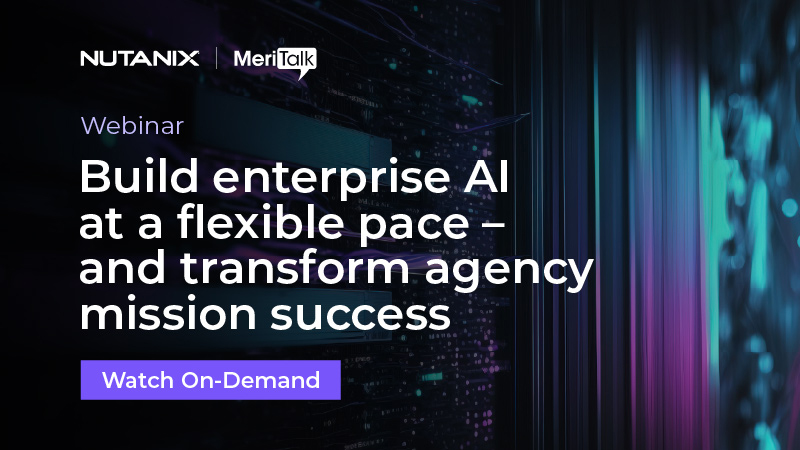
Technology experts at the Department of Labor, U.S. Air Force, the Transportation Security Administration (TSA), and software provider Nutanix are emphasizing that government agencies should focus on implementing simple, flexible, and agile approaches to their artificial intelligence (AI) integrations.
During MeriTalk’s “Build enterprise AI at a flexible pace – and transform agency mission success” webinar released on Jan. 27, the experts said that kind of approach is crucial to agency success as U.S. government policy approaches to AI adoption continue to evolve.
Yemi Oshinnaiye, chief information officer (CIO) at TSA, said his agency uses AI for many different purposes throughout its operations, and TSA’s focus is consistent with the ever-changing nature of AI tools and their capabilities.
“You have to be flexible, because things we do today might not be the things we do tomorrow. In fact, we expect they’re not, because this is a fast-moving train,” Oshinnaiye said.
Louis Charlier, CIO at the Labor Department, agreed with Oshinnayie and said his department is integrating AI with a focus on testing and learning from pilot projects, taking in consumer feedback, and collaborating wherever possible.
“We’re embracing the commitment to flexibility, rapid adoption, and a proactive stance in addressing challenges as they emerge,” Charlier said. “This not only mitigates risk, but also significantly enhances the potential for innovation,” he added.
From an industry perspective, Jason Langone, senior director of global AI business development at Nutanix, said supporting rapid prototyping is a key goal in the integration of AI across Federal agencies to enhance collaboration between agencies and private sector partners.
“It’s important to have telemetry on consumption and performance and scalability so that we can continue to point toward the agencies and our customers’ North Star, but also uncover very likely new opportunities to apply AI to solve mission challenges,” Langone said.
As agencies adjust to shifting administrations, Daniel May, chief artificial intelligence officer for the Air Force Intelligence Community, said he is focusing on addressing security, personnel, and regulatory problems to apply AI technologies on a simple, scalable basis and address more complex problems with complex technologies.
“If we have a solid understanding of the problem as a technology change, then it presents new opportunities that makes it a lot more likely that we can deliver something useful with lasting impact,” May said.
Oshinnaiye highlighted educating the workforce on the capabilities of AI tools at the TSA as an important measure to ensure effective integration throughout the agency.
“We want to make sure that folks aren’t afraid of the technology and that they know exactly what they’re going to do with it,” Oshinnaiye said. “The more educated they are, the more savvy they are, the better we are, and the more advanced our tools become,” he added.
Charlier emphasized his desire for AI to be used as a “force multiplier” in the Labor Department. He said maintaining the human element in their work is essential to the agency’s continued effectiveness.
“Every agency struggles for resources and funding, and this is one of those technologies that can help alleviate those issues,” Charlier said. “At the end of the day, the Department of Labor’s mission is the American worker,” he added.
At TSA, Oshinnaiye said the agency’s main use for AI is for facial recognition software which is assisted by a human operator to ensure to issues arise. He also explained that AI is helping the agency to determine trends in security incident data and allow workers to respond to threats.
“I think using those technologies we’ve been building off are having a lot of great success,” Oshinnaiye said.
Langone said he sees the most effective uses of AI when they are implemented to enhance simple processes which agencies are very familiar with, and have lots of data already on hand to use.
“There’s a lot of low hanging fruit just in encouraging employees to use localized large language models and looking through standard digital or paper heavy processes where you could apply AI and really start to open up a new world of efficiency,” Langone said.
